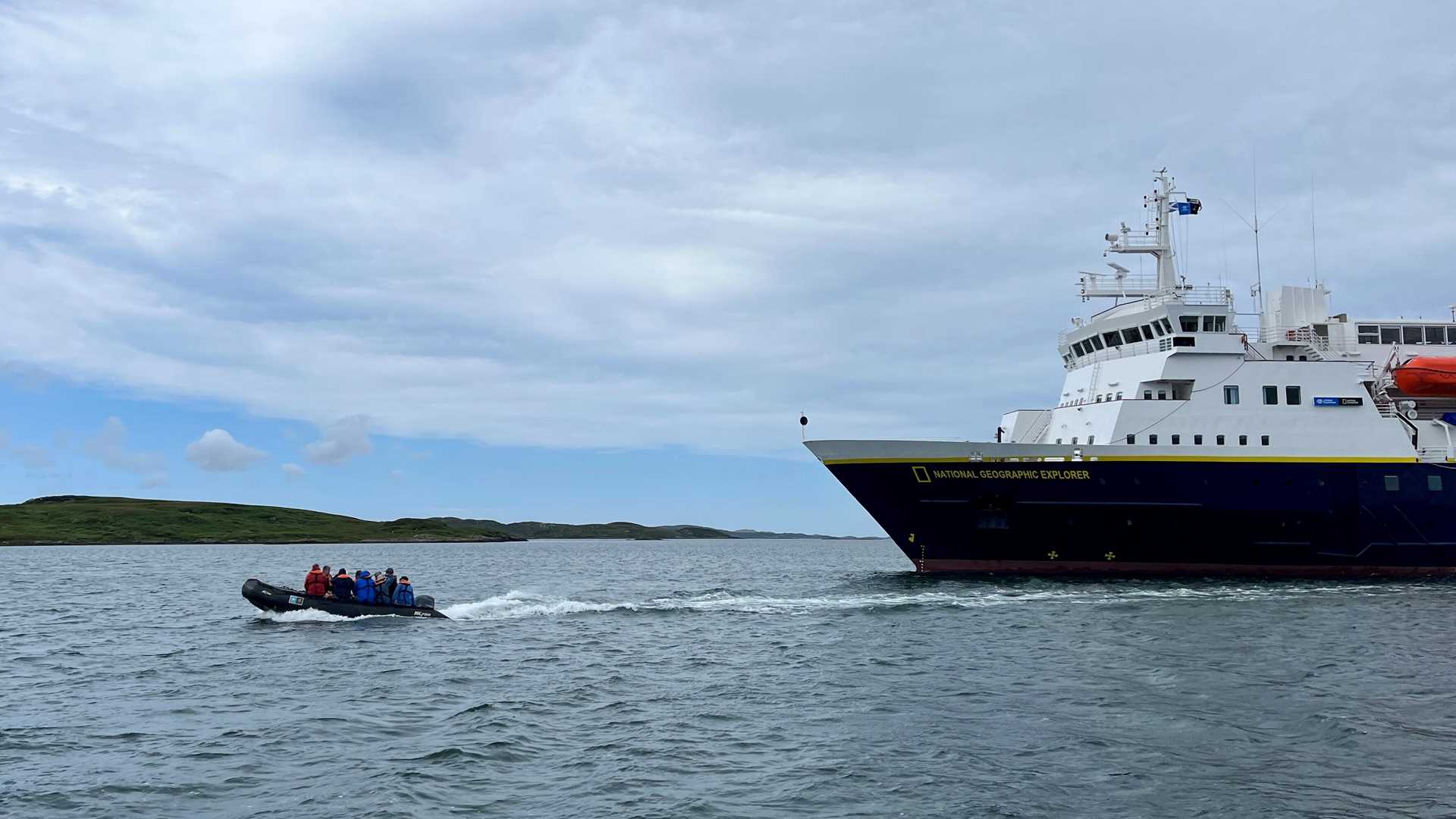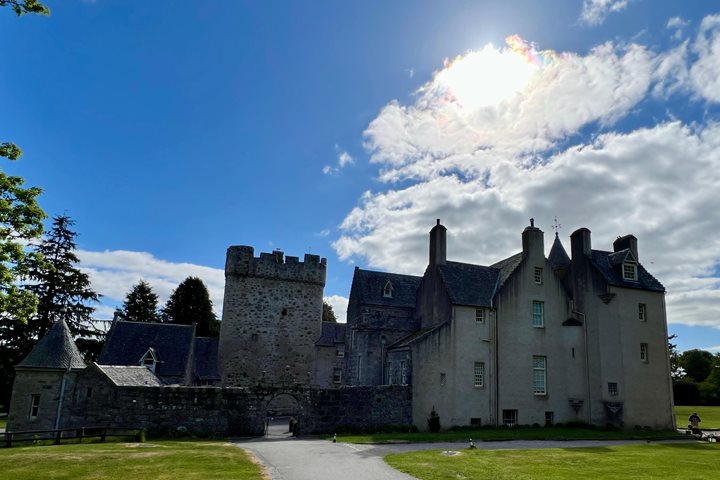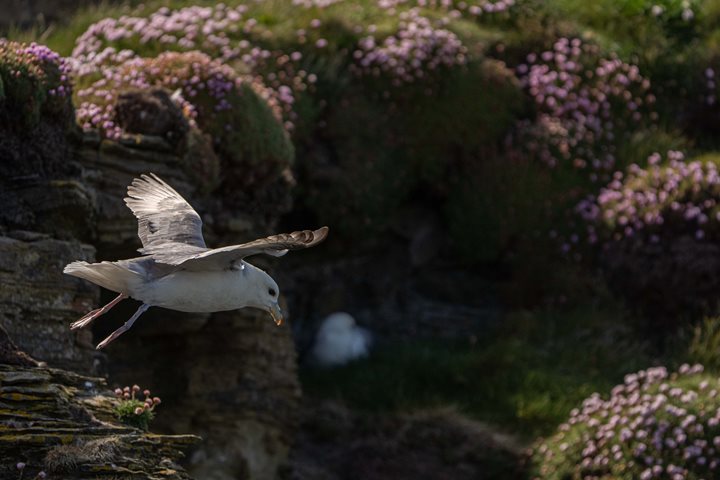With strong winds and heavy rain in the forecast, today was very much an expedition. With plan A looking unlikely, we headed to the shelter of the Western Isles and towards the Isle of Harris and Lewis. We were escorted into the sheltered waters by puffins, Manx shearwaters, gannets, and storm petrels. By the time we anchored and launched the Zodiacs, the wind had dropped, and the sun was shining. We spent the afternoon exploring the Neolithic standing stones of Callanish.
5/23/2025
Read
National Geographic Explorer
Aberdeen
Blue skies, a comfortable temperature, and a gentle breeze accompanied guests as they enjoyed visiting the beautiful Aberdeenshire countryside and the city of Aberdeen. As guests disembarked for their morning activities, a lone piper played traditional tunes at the foot of the gangway, a very warm greeting to Aberdeen that further enhanced our overall Scottish experience. While some guests had the opportunity to visit Highland Cattle and Scottish Blackface sheep at a nearby farm, others were able to spend a wonderful morning at either Drum Castle or Crathes Castle. Castle visits included a guided tour of these fortified homes and were followed with independent time, during which guests enjoyed walking through the beautiful gardens and woodlands. For those guests that participated in the city tour of Aberdeen, the sunny conditions highlighted the ornate structures of the Granite City, so named because many of the buildings are constructed of the rock that is found in the hillsides surrounding the city. A glorious morning was enjoyed by all in this remarkable city and its surroundings.







